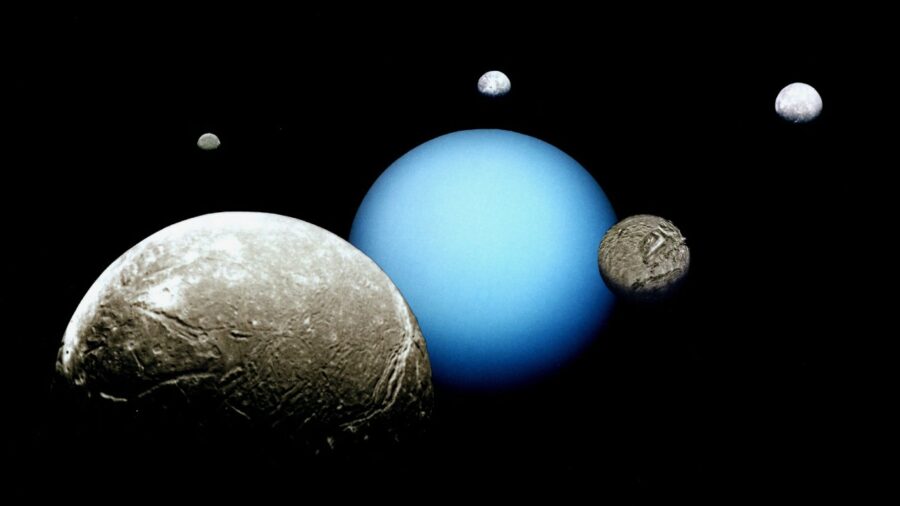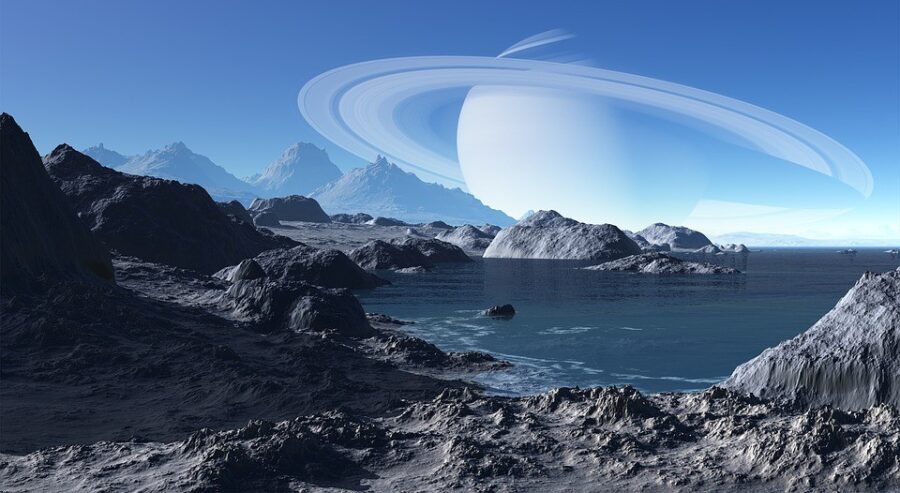Uranus Moons Are Havens For Life? New Research Reveals Huge Surprise
New research reveals Uranus' moons may contain warm water.

We may not be as alone in the universe as we thought. According to Guardian Mag, scientists have discovered the potential for liquid oceans in the Uranus moons. Some of these oceans may even be warm enough to support alien life.
In the 1980s, the spacecraft Voyager collected data on the largest Uranus moons: Ariel, Titania, Umbriel, Oberon, and Miranda. A reexamination of the Voyager data, in conjunction with information gathered in more recent NASA missions, suggests that these moons, except Miranda, may be warm enough to contain liquid oceans.
The outer crusts of these Uranus moons are icy, but oceans within Titania and Oberon may even be warm enough to support life.
Uranus has 27 moons, but these five are the largest; researchers have focused their attention on them instead of trying to measure all 27 in great detail. Scientists can only theorize based on the current data. More observations will be necessary in order to reach any firm conclusions.
It has long been speculated that any warmth generated by the Uranus moons would come from radioactive decay within them. New findings suggest that the moons may be insulated enough to retain a lot of that heat.
The supposed oceans of the Uranus moons are also thought to contain large concentrations of chlorides, ammonia and salt, which reduce the freezing temperature of water. The low freezing point and the radioactive decay heat from within the moons could create conditions warm enough to allow for liquid oceans deep beneath the moons’ surfaces.

Scientists observed evidence of recent geological activity on Ariel, and an internal liquid ocean could account for the readings. Even Miranda, which is estimated to be frozen solid, shows signs of relatively new surface formations, suggesting that it may have had a liquid ocean at some point. Despite the mounting evidence for the theory, scientists know there is still a lot to learn about what is happening on the Uranus moons.
“When it comes to small bodies — dwarf planets and moons — planetary scientists previously have found evidence of oceans in several unlikely places, including the dwarf planets Ceres and Pluto, and Saturn’s moon Mimas,” said NASA’s Julie Castillo-Rogez, the lead author of the study. “So there are mechanisms at play that we don’t fully understand.”
Proving the existence of liquid oceans in the Uranus moons will be a significant challenge, but planetary scientists have ideas on how they can support their theories. Implementing spectrometers that detect wavelengths reflected by chlorides and ammonia is one option for proving the existence of the chemicals beneath the surface. They may also attempt to measure the electrical currents generated by water.
But according to Castillo-Rogez, one of the most helpful methods will be updating models for how the Uranus moons formed in the first place. If scientists can create more scenarios for how the moons came to be, they can make more informed choices about what needs to be measured.
Observing the Uranus moons, or any extraterrestrial body, is a challenging endeavor. It will be a significant discovery if scientists can prove the existence of liquid oceans outside of Earth, especially on a body as close as the Uranus moons. It may even point to the existence of life outside of Earth, changing humanity’s understanding of life as we know it.












